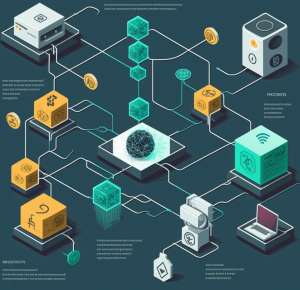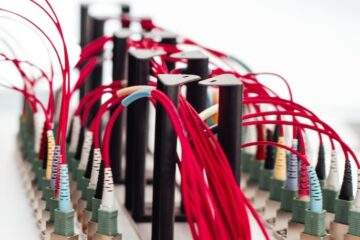The internet has come a long way since its inception. From the static web pages of the early days to the dynamic and interactive web of today, the internet has evolved in many ways. One of the most recent and exciting developments is the emergence of Web3. In this blog, we will explore what Web3 is, how it differs from previous versions of the web, and its potential future.
What is Web3?

Web3, also known as the decentralized web or the blockchain web, is the next generation of the internet. Unlike the current centralized web, which relies on servers owned by corporations or governments, Web3 is decentralized and runs on a peer-to-peer network of computers. It is built on top of blockchain technology, which is a distributed ledger that enables secure and transparent transactions without the need for intermediaries.
Web3 is still in its early stages, but it has the potential to revolutionize the way we use the internet. It promises to bring back the original vision of the internet, which was a decentralized network that could not be controlled by any single entity. Web3 aims to create a more open, transparent, and fair internet that is accessible to everyone.
What’s the Difference with Previous Versions of the Web?
The first version of the web, also known as Web 1.0, was a collection of static web pages that could only be viewed. Users had no way to interact with the content or with each other. Web 2.0, which emerged in the early 2000s, brought about the interactive web, which allowed users to contribute and share content. Social media, blogs, and wikis are some of the most popular examples of Web 2.0 applications.
Web3 is the next step in the evolution of the web. It is different from Web 1.0 and Web 2.0 in several ways:
Decentralization: Web3 is decentralized, meaning that it does not rely on central servers owned by corporations or governments. Instead, it runs on a peer-to-peer network of computers.
Blockchain Technology: Web3 is built on top of blockchain technology, which provides a secure and transparent way of recording and verifying transactions.
Privacy: Web3 puts user privacy at the forefront. Users have complete control over their data and can choose to share it only with those they trust.
Openness: Web3 is open and accessible to everyone. Anyone can participate in the network and contribute to its growth and development.
What’s the Future of Web3?
The future of Web3 is exciting and promising. It has the potential to change the way we interact with the internet and with each other. Here are some of the ways in which Web3 could be used in the future:
Decentralized Applications (dApps): Web3 enables the creation of decentralized applications (dApps), which run on a blockchain network. dApps can be used in various industries, such as finance, healthcare, and gaming.
Decentralized Finance (DeFi): Web3 is already being used in the financial industry to create decentralized finance (DeFi) applications. DeFi aims to create a more open and transparent financial system that is accessible to everyone.
Digital Identity: Web3 could be used to create a decentralized digital identity system that puts users in control of their data and allows them to share it only with those they trust.
Supply Chain Management: Web3 could be used in supply chain management to create a more transparent and efficient system that reduces fraud and waste.
Web3 is the next generation of the internet. It is decentralized, runs on blockchain technology, and puts user privacy and control at the forefront. Web3 has the potential to revolutionize the way we interact with the internet and with each other. Its potential uses are many, from decentralized applications and finance to digital identity and supply chain management. However, Web3 is still in its early stages, and there are many challenges to be addressed before it can reach its full potential.
One of the main challenges is scalability. Current blockchain networks, such as Ethereum, have limited capacity and cannot handle large numbers of transactions. This can lead to slow processing times and high transaction fees. To overcome this challenge, new technologies, such as sharding and layer 2 solutions, are being developed.
Another challenge is usability. Web3 is still relatively complex, and the user experience can be difficult for non-technical users. To overcome this challenge, developers are working on creating more user-friendly interfaces and applications that make it easier for people to interact with Web3.
Conclusion
Web3 is the future of the internet. It has the potential to create a more open, transparent, and fair internet that is accessible to everyone. However, there are still many challenges to be addressed before Web3 can reach its full potential. As developers and entrepreneurs continue to build and innovate, we can expect to see more exciting developments in the world of Web3 in the years to come.


